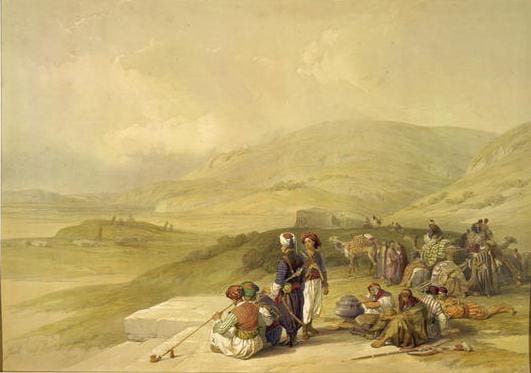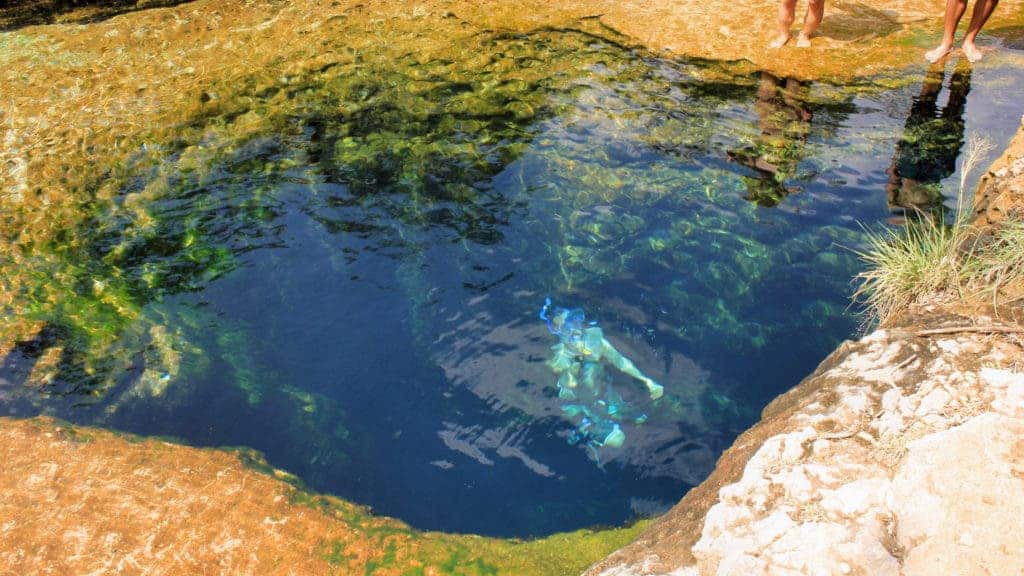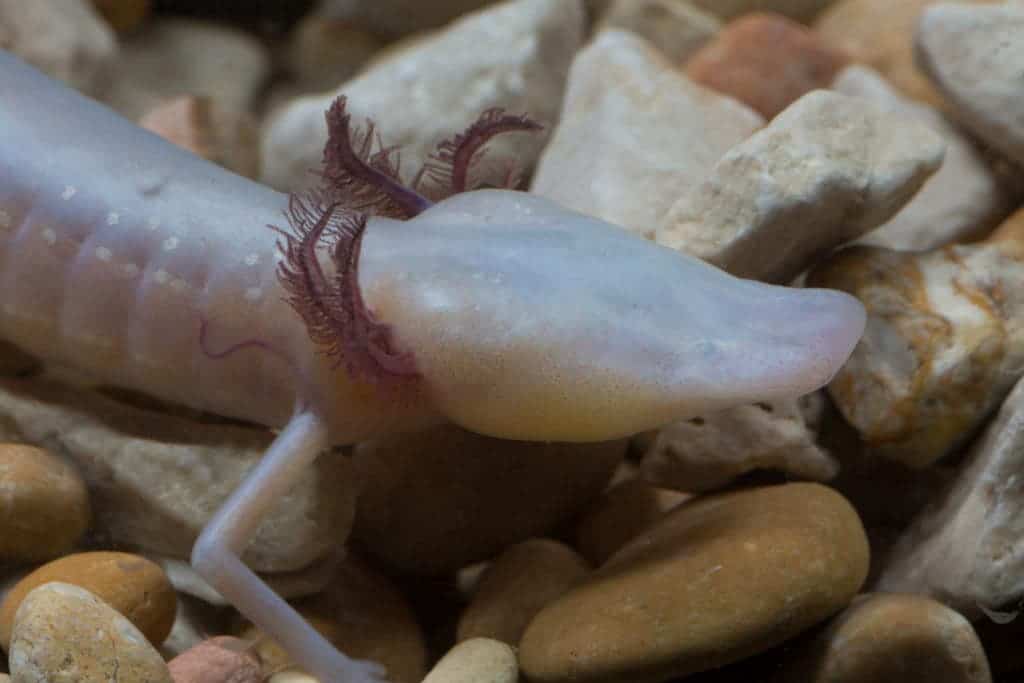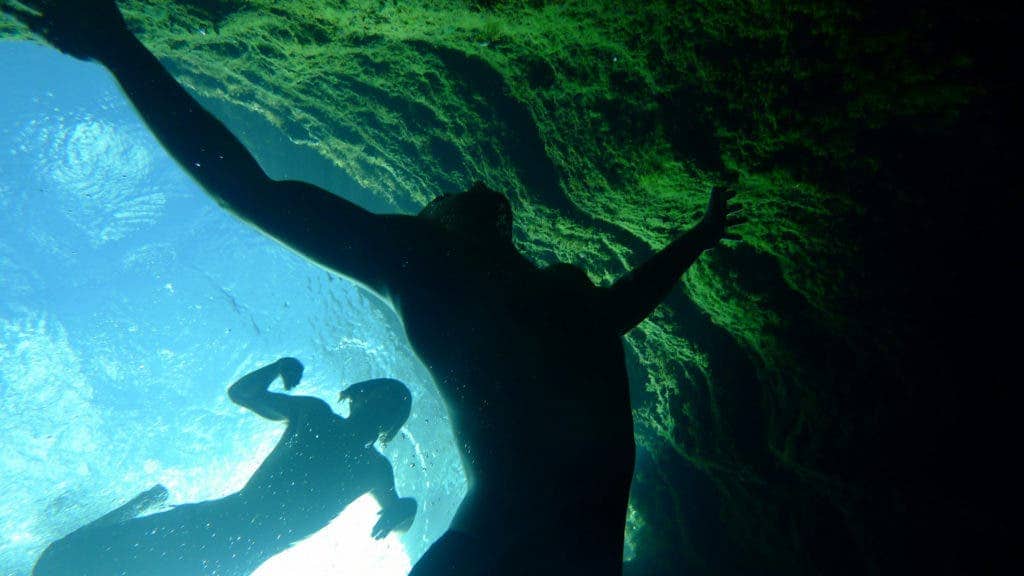
Just an hour’s drive from Austin in Hays County, Texas, lies a natural wonder: Jacob’s Well. Every summer, many choose to escape Texas’ scorching heat by dipping in the refreshing and beautiful spring whose waters stay year-round at 68 °F (20°C). It’s not just the heat-stricken that flock to the spring, though. Many daredevils dive into the spring which extends for over a mile below the surface into an intricate cave system. Some say it’s the trip of a lifetime. But it can come at a huge cost — many have died diving into Jacob’s Well.
An artesian spring, revered by Native Americans for millennia, Jacob’s Well has been flowing out of a natural underground reservoir known as the Trinity Aquifer for perhaps millions of years. It’s the source of the Cypress Creek but also home to extensive underground chambers. The aquifer is replenished by rainfall and surface water that filters through the limestone rock, creating a network of underground caves and channels.
The origin of Jacob’s Well
The first written mention of the spring is from a 19th-century book written by a man after whom some believe the spring was named, Jacob de Cordova. He was one of the first land agents or a real estate agent as it’s called today, in this part of Texas.
“The well is perfectly round, looks as if it was cut out of the solid rock by a skillful artist, and the water is so clear that even at that great depth you can, with the naked eye, discern a small an object as a pin,” de Cordova wrote, possibly — some say — to sway settlers to move in the vicinity of the well where the agent owned land.
Others believe the artesian spring gets its name from a biblical story in which Jacob, one of the patriarchs of the Israelites, dug a well that never ran dry. The well’s constant flow is a result of the pressure exerted by the water in the aquifer, which pushes the water to the surface.
In the first half of the 20th century, its waters gushed like a fountain. It was actually very difficult to dive in the spring because of all the water that was going up, but since then, the waters have been a lot calmer attracting many people and wildlife for a dip.
Most people choose to lounge around on the lip of the well to relax in the cold, crystal-clear water but some leap into the well from nearby outcroppings into the slim opening of the water. Then there are the daredevils who free-dive into the well sometimes as deep as 100 feet, maneuvering the thin openings into the underwater cave. But only specialized divers are allowed to explore the underground chambers of the spring. Diving all the way to the end of the principle passage is a five-hour SCUBA ride and can be extremely difficult, something which the Jacob’s Well Exploration Project calls a “challenging, unforgiving environment.” Only licensed SCUBA divers are allowed to explore these passages.
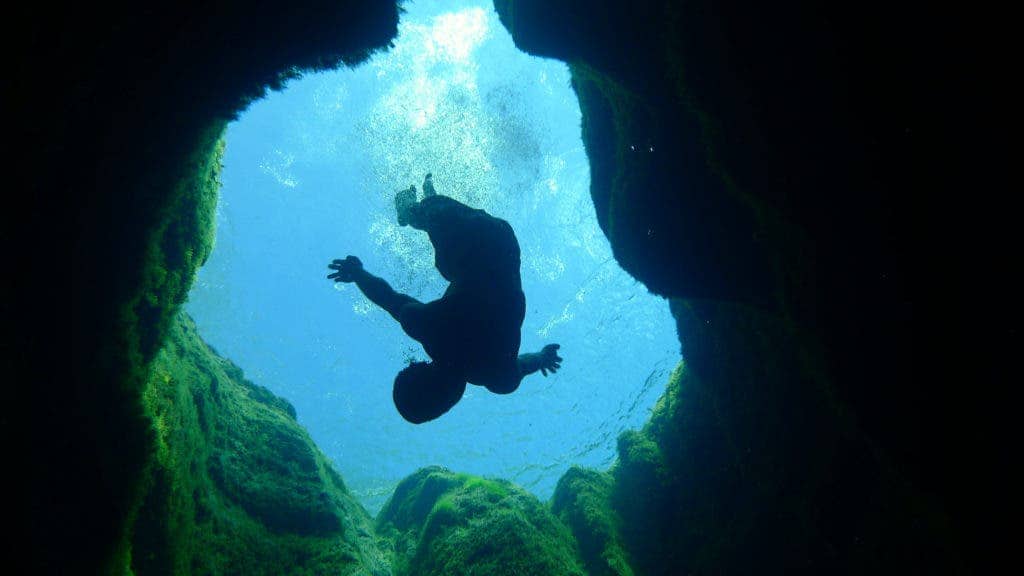
The dangers of diving in Jacob’s Well
A dive inside Jacob’s Well might look like a lot of fun but, remember, it can also be very dangerous. At least nine people have died diving into Jacob’s Well, which is quite a lot considering the number of people who visit the area, prompting some to call it ‘one of the most dangerous diving spots in the world’.
The underwater cave system’s chambers can be tricky, especially the third one located 80 feet below the surface which features a ‘fake’ exit that has trapped and killed at least one diver. The fourth chamber is perhaps the most dangerous since it involves squeezing through a very narrow passageway. Two young Texas men were caught in one of the well’s caves and drowned in 1979, another diver’s remains were flushed out of the well in 1981, and there have been other fatalities until 2000.
“This is the horror story side of it,” says Don Dibble, a dive shop owner with more than 40 years of diving experience. “Jacob’s Well definitely has a national reputation of being one of the most dangerous places to dive.”
Dibble knows what he’s talking about. He nearly lost his life in a 1979 recovery dive while he was attempting to retrieve the remains of two young divers from Pasadena. At one point, he got trapped, buried past his waist in the sliding gravel lining the bottom of the well’s third chamber. He was luckily rescued by other divers but suffered a ruptured stomach.
The video below shows Diego Adame, a 21-year-old from San Antonio, free-diving deep in the caves when suddenly he loses one of his flippers. He had to cut away his weight belt to make it back to the surface before he ran out of breath. “For a split second,” Adame said, “I thought of death and myself dying that day.”
These stories don’t scare tourists easily, though. Though it’s forbidden to jump from the rocks overlooking the 13-foot opening, many ignore the rules and dive straight into the upward current. That being said, if you’re looking for a nice place to cool down, Jacob’s Wells is a sweet spot but be mindful of the caves — you shouldn’t dive at all unless you’re a professional.
Deep in the cave, there aren’t that many plants or animals, but around the entrance and even in the first chamber there are signs of life. You can see turtles, several species of fish, catfish, and sunfish — these are typically animals that have entered the cave, lost their way and now can’t get out. They don’t actually live in the cave environment but there are some native species including the Texas Blind Salamander (Eurycea rathbuni) which due to lack of sunlight has lost all its pigmentation and no longer needs eyes to navigate the year-round 68-degree water.
Where the spring empties into Cypress Creek, there is a wide variety of wildlife: reptiles, amphibians, birds, and mammals make their homes along the banks of the surrounding 81 acres of the Jacob’s Well Natural Area.
Jacob’s Well is a unique and fragile ecosystem, and it’s important to take steps to preserve it for future generations. The well is owned and operated by the City of Wimberley, which has implemented several measures to protect the well’s ecosystem. The city has limited the number of divers who are allowed to enter the well at any given time and also closed the well to diving during certain times of the year to allow the aquatic life to spawn and reproduce.
So, after a nice, refreshing dip in Jacob’s Well, maybe you ought to do some exploring too and check out the local wildlife. You might be in for a surprise.
